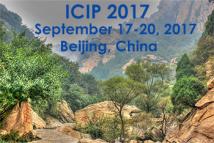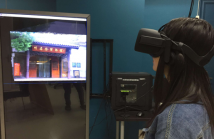
The International Conference on Image Processing (ICIP), sponsored by the IEEE Signal Processing Society, is the premier forum for the presentation of technological advances and research results in the fields of theoretical, experimental, and applied image and video processing. ICIP has been held annually since 1994, brings together leading engineers and scientists in image and video processing from around the world. Visit website.
- Read more about HYBRID SALIENT MOTION DETECTION USING TEMPORAL DIFFERENCING AND KALMAN FILTER TRACKING WITH NON-STATIONARY CAMERA
- Log in to post comments
Uncertain motion of typical surveillance targets, e.g. slow moving or stopped, abrupt acceleration, and uniform motion makes a single salient motion detection algorithm unsuitable for accurate segmentation. It becomes even more challenging in case of the camera is non-stationary. In this paper, first, a simple local adaptive temporal differencing method is proposed to detect moving objects boundaries and partial interiors.
- Categories:
 4 Views
4 Views- Read more about Noise-tolerant Deep Learning for Histopathological Image Segmentation
- Log in to post comments
- Categories:
 2 Views
2 Views- Read more about High Quality Reconstruction of Dynamic Objects using 2D-3D Camera Fusion
- Log in to post comments
- Categories:
 9 Views
9 Views
- Read more about FLEXIBLE 3D NEIGHBORHOOD CASCADE DEFORMABLE PART MODELS FOR OBJECT DETECTION
- Log in to post comments
Cascade Deformable Part Models (DPMs) are cascade frameworks to speed up Deformable Part Models (DPMs), which are one of the state-of-the-art solutions for object detection. Its idea is to reject most non-object hypotheses from the early stages of detection process. By investigating the dependency between hypotheses over scales, we introduce a novel pruning method to accelerate Cascade DPM frameworks.
- Categories:
 2 Views
2 Views
- Read more about REAL-TIME WALKTHROUGH OF OUTDOOR SCENES USING TRI-VIEW MORPHING
- Log in to post comments
In this paper, an image-based walkthrough system is presented for navigating real-world outdoor scenes based on only three uncalibrated images without reconstructing 3D model. An image-based rendering operation is performed on these sample images and generates photorealistic in-between views in real time. We extend the traditional two-step view morphing to real-time tri-view morphing based on epipolar constraint.
- Categories:
 2 Views
2 Views
In this paper, we deal with geometric model fitting problems on graphs, where each vertex represents a model hypothesis,and each edge represents the similarity between two model hypotheses. Conventional median-shift methods are very efficient and they can automatically estimate the number of clusters. However, they assign the same weighting scores to all vertices of a graph, which can not show the discriminability on different vertices. Therefore, we propose a novel weighted median-shift on graphs method (WMSG) to fit and segment multiple-structure data.
ICIP_1400.pptx
- Categories:
 9 Views
9 Views- Read more about Face Recognition using Multi-modal Low-rank Dictionary Learning
- 1 comment
- Log in to post comments
ICIP_2570.pdf
- Categories:
 24 Views
24 Views- Read more about IMAGE-BASED MEASUREMENT OF CARGO TRAFFIC FLOW IN COMPLEX NEURITE NETWORKS
- Log in to post comments
Neurons depend critically on active transport of cargoes throughout their complex neurite networks for their survival and function. Defects in this process have been strongly associated with many human neurodevelopmental and neurodegenerative diseases. To understand related neuronal physiology and disease mechanisms, it is essential to measure the traffic flow within the neurite networks. Currently, however, image analysis methods required for this measurement are lacking.
- Categories:
 13 Views
13 Views
- Read more about Variational Fusion of Time-of-Flight and Stereo Data Using Edge Selective Joint Filtering
- Log in to post comments
In this paper, we propose variational fusion of time-of-flight (TOF) and stereo data using edge selective joint filtering (ESJF). We utilize ESJF to up-sample low-resolution (LR) depth captured by TOF camera and produce high-resolution (HR)depth maps with accurate edge information. First, we measure confidence of two sensor with different reliability to fuse them. Then, we up-sample TOF depth map using ESJF to generate discontinuity maps and protect edges in depth. Finally, we perform variational fusion of TOF and stereo depth data based on total variation (TV) guided by discontinuity maps.
- Categories:
 34 Views
34 Views- Read more about ByNet-SR: Image Super Resolution with a Bypass Connection Network
- Log in to post comments
- Categories:
 13 Views
13 Views